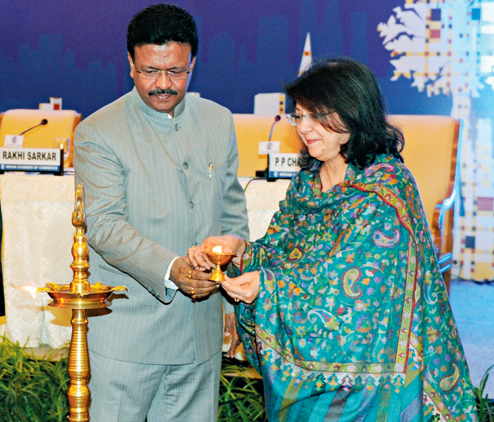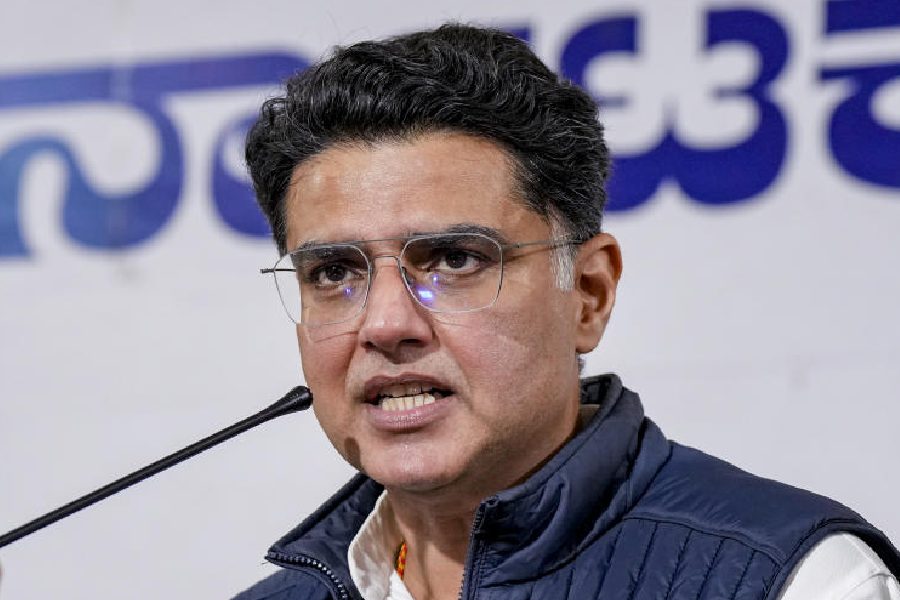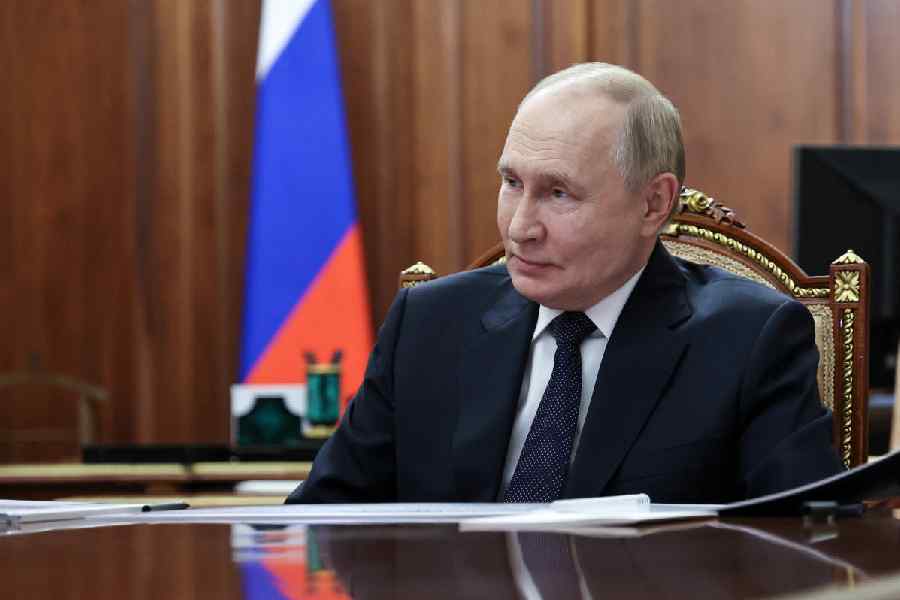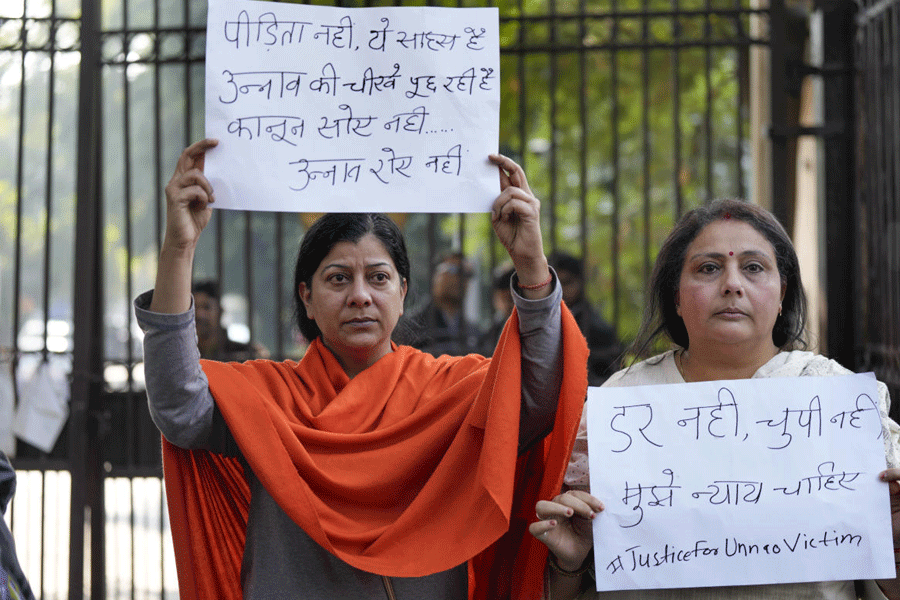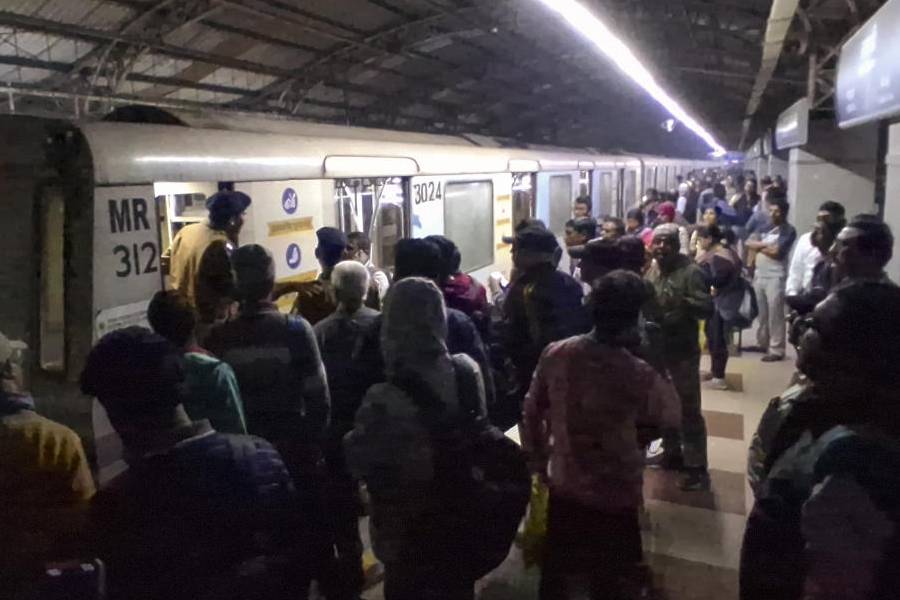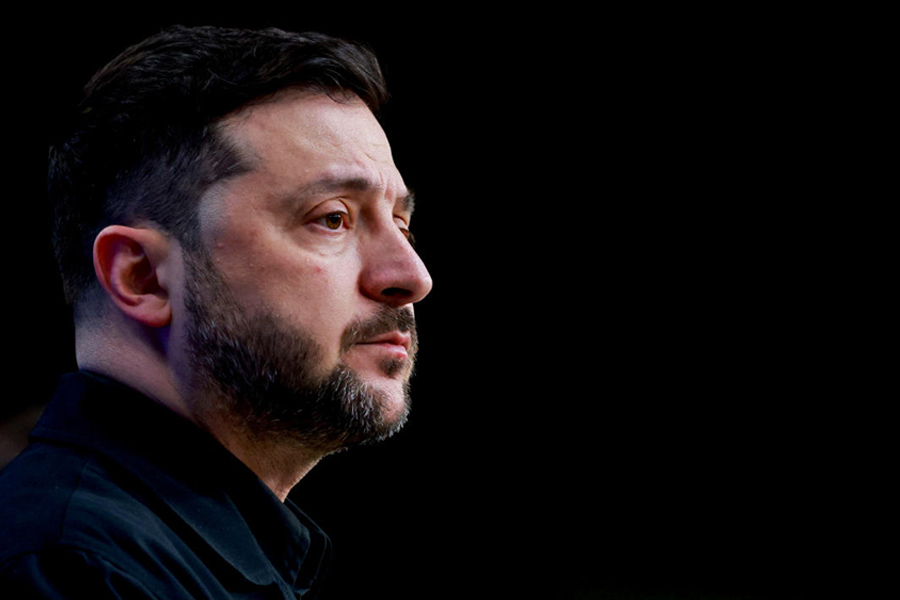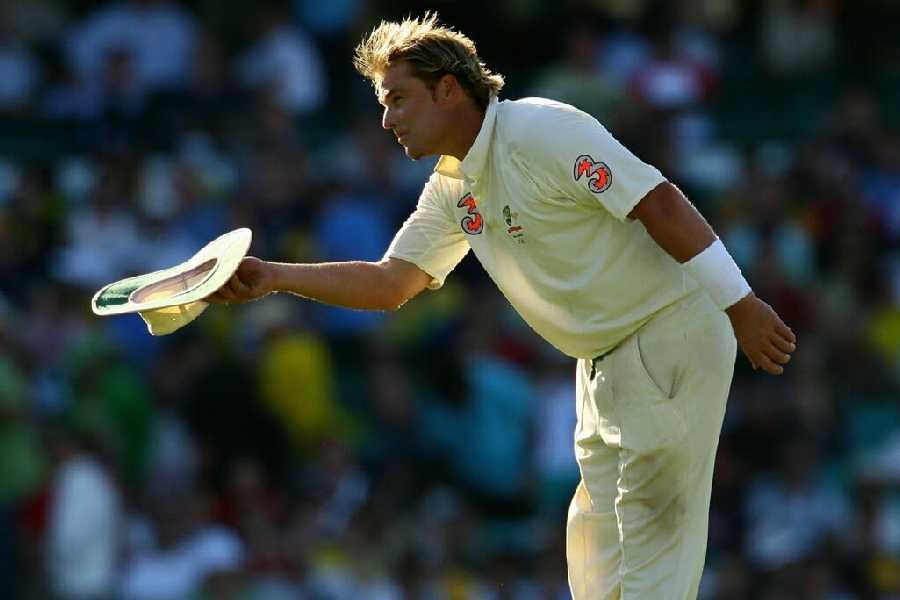 |
| Urban development minister Firhad Hakim lights the ceremonial lamp with Rakhi Sarkar, managing trustee of KMOMA, at the inauguration of the Sound Square symposium on Thursday. (Amit Datta) |
The road ahead for a struggling megapolis and, more importantly, a promise to make Calcutta a better place.
With these key points on the table, a two-day symposium on the challenges staring at Calcutta began on Thursday.
“Calcutta struggles to manage its population, poverty, traffic congestion,” said urban development minister Firhad Hakim after opening the event, Sound Square, organised by the Kolkata Museum of Modern Art (KMOMA) in association with the Indian Chamber of Commerce (ICC). The event is supported by the Confederation of Real Estate Developers Associations of India (Credai), Bengal chapter.
“Instances of lung cancer and heart attack in the city are very high…. The Hooghly needs to be protected from the constant pollution from sewage discharged into it,” he said. “We need immediate restoration of the ghats. Barring a few, most are in very poor state. But our government is keen to turn the city around… into a truly international city. We are taking steps.”
Sound Square, held at The Gateway Hotel near the Ruby roundabout on the Bypass, will discuss over six sessions ways and means to turn things around. It brings academics, government officials, architects and students to discuss the problems of urban planning and offer solutions.
An action plan for the development of Calcutta, prepared by the department of architecture at IIT Kharagpur, will be released on Friday.
Rakhi Sarkar, managing trustee of KMOMA, stressed the need for futuristic planning. “The old has to be reinvented. The new must be created with at least the next 200 years in mind. For this, we need systematic long-term planning involving issues of ecology, visions of growth and pristine beauty,” said Sarkar, also the chairperson of the ICC’s Calcutta Foundation.
The original capital of British India, Calcutta degenerated into a crumbling city after Independence. Open space disappeared, the majestic buildings decayed, ugly polythene stalls ruined the promenades and the concrete jungle ran over a beautiful city.
Sarkar said KMOMA got involved in organising the symposium “as part of its humble aim to restructure Calcutta”.
“What is required is a model that enhances growth without disturbing beauty, serenity and natural balance,” she added.
Partha Pratim Chakraborty, the director of IIT Kharagpur who is also a professor in the department of computer science and engineering, stressed the need for sound planning to blend the city’s rich heritage with modernity. He said technology should be used to improve the lives of the poor, which in turn would improve the urban space.
He cited the example of Kumartuli, the colony of idol-makers, where the IIT has been working to create models for improving the lives of the artisans, their market and the environment. “Technology must be used to uplift the poor, such as hawkers and artisans.”
Harsh Vardhan Patodia, the president of Credai’s Bengal chapter, delivered the vote of thanks.
Swapan Chakravorty, professor of English at Jadavpur University and former director-general of National Library, will on Friday chair the first session on the problems in conserving Calcutta’s heritage and the possible solutions.
Civil engineering and architecture students from IIT Kharagpur, Jadavpur University and the Bengal Engineering and Science University will present their perspective at a special session.
Students of architecture at IIT Khargpur have already pasted charts quoting figures and analyses from their thesis and project work at the venue. These include a study on the population and number of shops in Gariahat and Shyambazar, illustrating how the character of the two places has changed over the years.

